#development technologies in 2022
Explore tagged Tumblr posts
Text
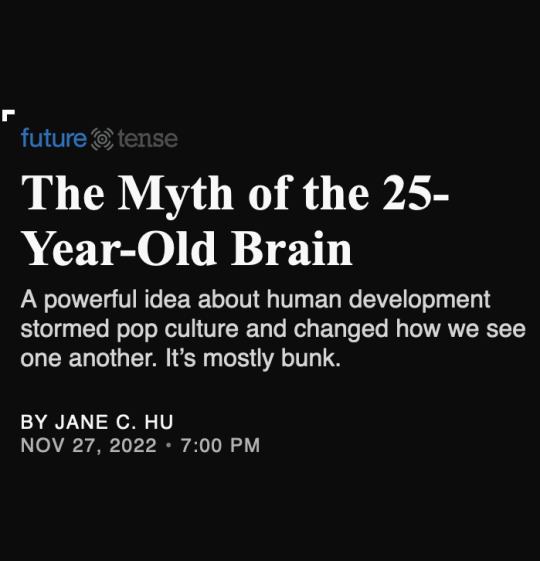
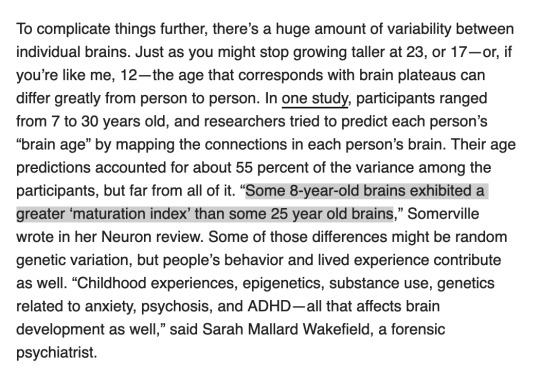
The brain does not magically mature at 25. Actual neuroscientists note some 8-year-olds even have a greater "maturation index" than 25-year-olds. The myth misunderstands basic neuroscience but is still used for anti-trans policymaking like the Cass Report. https://slate.com/technology/2022/11/brain-development-25-year-old-mature-myth.html
42K notes
·
View notes
Text
"A German bio-tech company has developed a naturally-occurring enzyme discovered in a cemetery into a near-market ready solution for recycling plastic without any loss of quality.
In 2022, GNN reported on a paper published by Leipzig-based scientists who first identified the enzyme. At the time, the enzyme was subject to a small side-by-side test, and caused the polyethylene terephthalate (PET) plastic to decompose by a whopping 90%.

Pictured: Before and After: A container of PET after 24 hours of contact with the enzyme leaves only dye
Fast forward to the spring of 2025 and those same scientists have perfected the capabilities of that enzyme, called PHL7, and have founded ESTER Biotech to bring those capabilities to market.
Their initial plan to be finished next year is a bathtub-sized pilot project reactor. If successful, their 2030 plan will be four 350 cubic-meter reactors capable of processing 45,000 metric tons of PET plastic every year.
PHL7 and ESTER Biotech boast several advantages over chemical and thermal recycling methods. For starters, once the polymers of PET are broken by the enzyme into monomers, or single component parts, they have suffered no degradation of their material characteristics unlike some recycled plastic which is weaker or less stable.
Additionally, PHL7 is exceptionally stable from 32 to 203 degrees Fahrenheit (0-95°C), and per kilogram of plastic, a dose of only 0.02% to 0.06% of the enzyme is required—substantially less than existing alternatives. Their new version of the enzyme also recycles the plastic several hours faster.
“Our technology makes it possible to bring material flows that are currently burned back to the beginning of the cycle at the molecular level,” says Christian Sonnendecker, lead author on the paper of the enzyme’s discovery, and co-founder of ESTER Biotech at the University of Leipzig. “And with high energy efficiency and scalability.”
“We are only at the beginning. But we are convinced that when science, entrepreneurial spirit and social responsibility come together, a cemetery enzyme can become a beacon of hope for a better future.”
RECYCLING BREAKTHROUGHS:
Scientists in Japan Develop Non-Toxic Plastic That Dissolves in Seawater Within Hours
Cornell Researchers Create First-of-its-Kind Durable and Recyclable Plastic
New Process ‘Vaporizes’ Plastic Bags and Bottles to Help Make Recycled Materials
Revolutionary New ‘Living Plastic’ That Could Slash Damage to the Environment Developed by California Researchers
ESTER Biotech’s enzyme is able to separate certain multilayer composites which are normally thought of as unrecyclable. In addition to the infrastructure of the pilot project, ESTER is currently working with two medium-sized partners to build a cost-efficient supply chain with an aim to reduce the enzyme price to between 100 and 200 euros per kilogram.
Though no currently-commercialized recycling method can compete with the cost of virgin plastic, a price between 100 and 200 euros will put it in line with existing competitors.
Fortunately for anyone in the space, the EU is not afraid to use heavy-handed regulation to guarantee plastic recycling rates. By 2040, under existing EU legislation, 65% of plastic production will be mandated to come from recycled sources. ESTER believes that with its potential to offer a higher quality “recyclate,” the incentive to pursue and expand enzymatic methods will increase."
-via Good News Network, June 13, 2025
#recycling#plastic#plastic pollution#environmental science#enzyme#waste#waste management#plastic recycling#germany#eu#europe#good news#hope
2K notes
·
View notes
Text
Things Biden and the Democrats did, this week #26
July 5-12 2024
The IRS announced it had managed to collect $1 billion in back taxes from high-wealth tax cheats. The program focused on persons with more than $1 million in yearly income who owned more than $250,000 in unpaid taxes. Thanks to money in Biden's 2022 Inflation Reduction Act the IRS is able to undertake more enforcement against rich tax cheats after years of Republicans cutting the agency's budget, which they hope to do again if they win power again.
The Biden administration announced a $244 million dollar investment in the federal government’s registered apprenticeship program. This marks the largest investment in the program's history with grants going out to 52 programs in 32 states. The President is focused on getting well paying blue collar opportunities to people and more people are taking part in the apprenticeship program than ever before. Republican pledge to cut it, even as employers struggle to find qualified workers.
The Department of Transportation announced the largest single project in the department's history, $11 billion dollars in grants for the The Hudson River Tunnel. Part of the $66 billion the Biden Administration has invested in our rail system the tunnel, the most complex Infrastructure project in the nation would link New York and New Jersey by rail under the Hudson. Once finished it's believed it'll impact 20% of the American economy by improving and speeding connection throughout the Northeast.
The Department of Energy announced $1.7 billion to save auto worker's jobs and convert factories to electronic vehicles. The Biden administration will used the money to save or reopen factories in Michigan, Ohio, Pennsylvania, Georgia, Illinois, Indiana, Maryland, and Virginia and retool them to make electric cars. The project will save 15,000 skilled union worker jobs, and created 2,900 new high-quality jobs.
The Department of Housing and Urban Development reached a settlement with The Appraisal Foundation over racial discrimination. TAF is the organization responsible for setting standards and qualifications for real estate appraisers. The Bureau of Labor Statistics last year found that TAF was 94.7% White and 0.6% Black, making it the least racially diverse of the 800 occupations surveyed. Black and Latino home owners are far more likely to have their houses under valued than whites. Under the settlement with HUD TAF will have to take serious steps to increase diversity and remove structural barriers to diversity.
The Department of Justice disrupted an effort by the Russian government to influence public opinion through AI bots. The DoJ shut down nearly 1,000 twitter accounts that were linked to a Russian Bot farm. The bots used AI technology to not only generate tweets but also AI image faces for profile pictures. The effort seemed focused on boosting support for Russia's war against Ukraine and spread negative stories/impressions about Ukraine.
The Department of Transportation announces $1.5 billion to help local authorities buy made in America buses. 80% of the funding will go toward zero or low-emission technology, a part of the President's goal of reaching zero emissions by 2050. This is part of the $5 billion the DOT has spent over the last 3 years replacing aging buses with new cleaner technology.
President Biden with Canadian Prime Minster Justin Trudeau and Finnish President Alexander Stubb signed a new agreement on the arctic. The new trilateral agreement between the 3 NATO partners, known as the ICE Pact, will boost production of ice breaking ships, the 3 plan to build as many as 90 between them in the coming years. The alliance hopes to be a counter weight to China's current dominance in the ice breaker market and help western allies respond to Russia's aggressive push into the arctic waters.
The Department of Transportation announced $1.1 billion for greater rail safety. The program seeks to, where ever possible, eliminate rail crossings, thus removing the dangers and inconvenience to communities divided by rail lines. It will also help update and improve safety measures at rail crossings.
The Department of the Interior announced $120 million to help tribal communities prepare for climate disasters. This funding is part of half a billion dollars the Biden administration has spent to help tribes build climate resilience, which itself is part of a $50 billion dollar effort to build climate resilience across the nation. This funding will help support drought measures, wildland fire mitigation, community-driven relocation, managed retreat, protect-in-place efforts, and ocean and coastal management.
The USDA announced $100 million in additional funds to help feed low income kids over the summer. Known as "SUN Bucks" or "Summer EBT" the new Biden program grants the families of kids who qualify for free meals at school $120 dollars pre-child for groceries. This comes on top of the traditional SUN Meals program which offers school meals to qualifying children over the summer, as well as the new under President Biden SUN Meals To-Go program which is now offering delivery of meals to low-income children in rural areas. This grant is meant to help local governments build up the Infrastructure to support and distribute SUN Bucks. If fully implemented SUN Bucks could help 30 million kids, but many Republican governors have refused the funding.
USAID announced its giving $100 million to the UN World Food Program to deliver urgently needed food assistance in Gaza. This will bring the total humanitarian aid given by the US to the Palestinian people since the war started in October 2023 to $774 million, the single largest donor nation. President Biden at his press conference last night said that Israel and Hamas have agreed in principle to a ceasefire deal that will end the war and release the hostages. US negotiators are working to close the final gaps between the two sides and end the war.
The Senate confirmed Nancy Maldonado to serve as a Judge on the Seventh Circuit Court of Appeals. Judge Maldonado is the 202nd federal Judge appointed by President Biden to be confirmed. She will the first Latino judge to ever serve on the 7th Circuit which covers Illinois, Indiana, and Wisconsin.
Bonus: At the NATO summit in Washington DC President Biden joined 32 allies in the Ukraine compact. Allies from Japan to Iceland confirmed their support for Ukraine and deepening their commitments to building Ukraine's forces and keeping a free and Democratic Ukraine in the face of Russian aggression. World leaders such as British Prime Minster Keir Starmer, German Chancellor Olaf Scholz, French President Emmanuel Macron, and Ukrainian President Volodymyr Zelenskyy, praised President Biden's experience and leadership during the NATO summit
#Joe Biden#Thanks Biden#politics#us politics#american politics#election 2024#tax the rich#climate change#climate action#food insecurity#poverty#NATO#Ukraine#Gaza#Russia#Russian interference
3K notes
·
View notes
Text
The Best News of Last Week
1. ‘We are just getting started’: the plastic-eating bacteria that could change the world
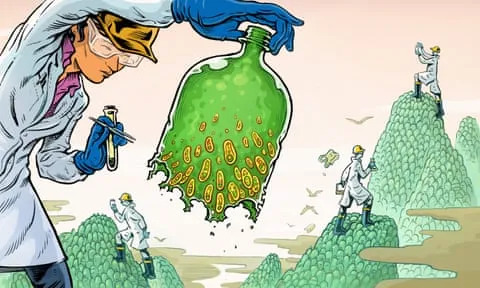
In 2016, Japanese scientists Oda and Hiraga published their discovery of Ideonella sakaiensis, a bacterium capable of breaking down PET plastic into basic nutrients. This finding marked a shift in microbiology's perception, recognizing the potential of microbes to solve pressing environmental issues.
France's Carbios has successfully applied bacterial enzyme technology to recycle PET plastic waste into new plastic products, aligning with the French government's goal of fully recycling plastic packaging by 2025.
2. HIV cases in Amsterdam drop to almost zero after PrEP scheme

According to Dutch AIDS Fund, there were only nine new cases of the virus in Amsterdam in 2022, down from 66 people diagnosed in 2021. The organisation claimed that 128 people were diagnosed with HIV in Amsterdam in 2019, and since 2010, the number of new infections in the Dutch capital has fallen by 95 per cent.
3. Cheap and drinkable water from desalination is finally a reality

In a groundbreaking endeavor, engineers from MIT and China have designed a passive solar desalination system aimed at converting seawater into drinkable water.
The concept, articulated in a study published in the journal Joule, harnesses the dual powers of the sun and the inherent properties of seawater, emulating the ocean’s “thermohaline” circulation on a smaller scale, to evaporate water and leave salt behind.
4. World’s 1st drug to regrow teeth enters clinical trials

The ability to regrow your own teeth could be just around the corner. A team of scientists, led by a Japanese pharmaceutical startup, are getting set to start human trials on a new drug that has successfully grown new teeth in animal test subjects.
Toregem Biopharma is slated to begin clinical trials in July of next year after it succeeded growing new teeth in mice five years ago, the Japan Times reports.
5. After Decades of Pressure, US Drugmaker J&J Gives Up Patent on Life-Saving TB Drug

In what can be termed a huge development for drug-resistant TB (DR-TB) patients across large parts of the world, bedaquiline maker Johnson and Johnson said on September 30 (Saturday) that it would drop its patent over the drug in 134 low- and middle-income countries (LMICs).
6. Stranded dolphins rescued from shallow river in Massachusetts
youtube
7. ‘Staggering’ green growth gives hope for 1.5C, says global energy chief

The prospects of the world staying within the 1.5C limit on global heating have brightened owing to the “staggering” growth of renewable energy and green investment in the past two years, the chief of the world’s energy watchdog has said.
Fatih Birol, the executive director of the International Energy Agency, and the world’s foremost energy economist, said much more needed to be done but that the rapid uptake of solar power and electric vehicles were encouraging.
---
That's it for this week :)
This newsletter will always be free. If you liked this post you can support me with a small kofi donation here:
Buy me a coffee ❤️
Also don’t forget to reblog this post with your friends.
11K notes
·
View notes
Text
#software engineer vs cyber security#cybersecurity#software developer vs cyber security#cyber security vs software engineer#choosing between software engineering vs cyber security#software engineering#software developer vs cyber security jobs#software developer vs cyber security career#software engineer vs pentesting#cybersecurity vs software engineering#software engineer#cyber security vs software engineer 2022#software engineer vs cyber security analyst#technology#softwareengineering#career#tech#newblogflo#secretstime
0 notes
Text
Saito has made a career of teasing out an eco-theory from the late, unpublished writings of Karl Marx. He earned his doctorate at Humboldt University, in Berlin, and now teaches philosophy at the University of Tokyo. His first book was an English version of his dissertation, titled “Karl Marx’s Ecosocialism” (2017), which tracked Marx’s study of the physical world and communal agricultural practices. (Saito is fluent in Japanese, German, and English.) In a second academic book, “Marx in the Anthropocene” (2022), Saito drew on an expanded repertoire of Marx’s unpublished notebooks to argue for a theory of “degrowth communism.” He gained a following, not only in philosophical circles but among a Japanese public facing the contradictions of tsunamis, billionaires, and same-day shipping. “Slow Down” has sold more than half a million copies in Japan and launched Saito into a rare academic celebrity. He appears regularly on Japanese television and aspires to the public-intellectual status of Thomas Piketty, the French economist who had a surprise hit in his 2013 doorstop, “Capital in the Twenty-first Century.”
The key insight, or provocation, of “Slow Down” is to give the lie to we-can-have-it-all green capitalism. Saito highlights the Netherlands Fallacy, named for that country’s illusory attainment of both high living standards and low levels of pollution—a reality achieved by displacing externalities. It’s foolish to believe that “the Global North has solved its environmental problems simply through technological advancements and economic growth,” Saito writes. What the North actually did was off-load the “negative by-products of economic development—resource extraction, waste disposal, and the like” onto the Global South.
If we’re serious about surviving our planetary crisis, Saito argues, then we must abandon capitalism, with its insatiable appetites. We must reject the ever-upward logic of gross domestic product, or G.D.P. (a combination of government spending, imports and exports, investments, and personal consumption). We will not be saved by a “green” economy of electric cars or geo-engineered skies. Slowing down—to a carbon footprint on the level of Europe and the U.S. in the nineteen-seventies—would mean less work and less clutter, he writes. Our kids may not make it, otherwise.
1K notes
·
View notes
Text
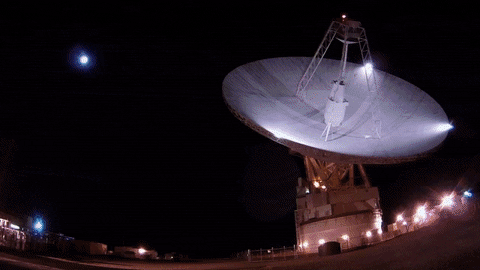
9 Out-of-This-World Moments for Space Communications & Navigation in 2023
How do astronauts and spacecraft communicate with Earth?
By using relay satellites and giant antennas around the globe! These tools are crucial to NASA’s space communications networks: the Near Space Network and the Deep Space Network, which bring back science and exploration data every day.
It’s been a great year for our space communications and navigation community, who work to maintain the networks and enhance NASA’s capabilities. Keep scrolling to learn more about our top nine moments.

The SpaceX Falcon 9 rocket carrying the Dragon spacecraft lifts off from Launch Complex 39A at NASA's Kennedy Space Center in Florida on Thursday, Nov. 9, 2023, on the company's 29th commercial resupply services mission for the agency to the International Space Station. Liftoff was at 8:28 p.m. EST.
1. In November, we launched a laser communications payload, known as ILLUMA-T, to the International Space Station. Now, ILLUMA-T and the Laser Communications Relay Demonstration (LCRD) are exchanging data and officially complete NASA’s first two-way, end-to-end laser relay system. Laser communications can send more data at once than traditional radio wave systems – think upgrading from dial-up to fiber optic internet. ILLUMA-T and LCRD are chatting at 1.2 gigabits per second (Gbps). At that rate, you could download an average movie in under a minute.

NASA’s InSight lander captured this selfie on Mars on April 24, 2022, the 1,211th Martian day, or sol, of the mission.
2. Data analyzed in 2023 from NASA’s retired InSight Mars lander provided new details about how fast the Red Planet rotates and how much it wobbles. Scientists leveraged InSight’s advanced radio technology, upgrades to the Deep Space Network, and radio signals to determine that Mars’ spin rate is increasing, while making the most precise measurements ever of Mars’ rotation.

TBIRD is demonstrating a direct-to-Earth laser communications link from low Earth orbit to a ground station on Earth.
3. We set a new high record! The TeraByte InfraRed Delivery (TBIRD) payload – also demonstrating laser communications like ILLUMA-T and LCRD – downlinked 4.8 terabytes of data at 200 Gbps in a single 5-minute pass. This is the highest data rate ever achieved by laser communications technology. To put it in perspective a single terabyte is the equivalent of about 500 hours of high-definition video.
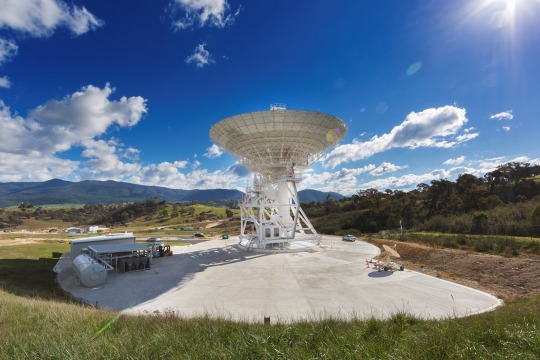
A 34-meter (112-foot) wide antenna at Canberra Deep Space Communications Complex near Canberra, Australia.
4. This year we celebrated the Deep Space Network’s 60th anniversary. This international array of antennas located at three complexes in California, Spain, and Australia allow us to communicate with spacecraft at the Moon and beyond. Learn more about the Deep Space Network’s legacy and future advancements.

An illustration of the LunaNet architecture. LunaNet will bring internet-like services to the Moon.
5. We are bringing humans to the Moon with Artemis missions. During expeditions, astronauts exploring the surface are going to need internet-like capabilities to talk to mission control, understand their routes, and ensure overall safety. The space comm and nav group is working with international partners and commercial companies to develop LunaNet, and in 2023, the team released Draft LunaNet Specification Version 5, furthering development.
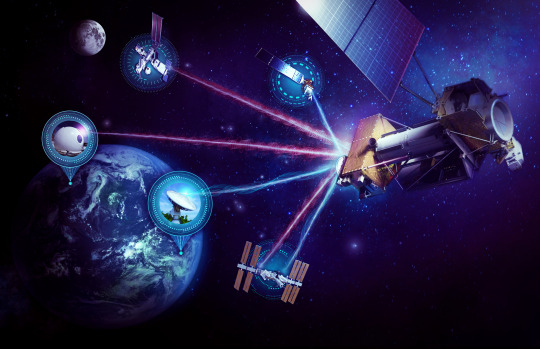
The High-Rate Delay Tolerant Networking node launched to the International Space Station in November and will act as a high-speed path for data.
6. In addition to laser communications, ILLUMA-T on the International Space Station is also demonstrating high-rate delay/disruption tolerant networking (HDTN). The networking node is showcasing a high-speed data path and a store-and-forward technique. HDTN ensures data reaches its final destination and isn’t lost on its path due to a disruption or delay, which are frequent in the space environment.

The Communications Services Project (CSP) partners with commercial industry to provide networking options for future spaceflight missions.
7. The space comm and nav team is embracing the growing aerospace industry by partnering with commercial companies to provide multiple networking options for science and exploration missions. Throughout 2023, our commercialization groups engaged with over 110 companies through events, one-on-one meetings, forums, conferences, and more. Over the next decade, NASA plans to transition near-Earth services from government assets to commercial infrastructure.
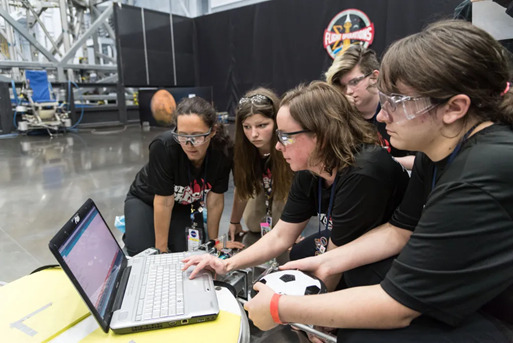
Middle and high school students solve a coding experiment during NASA's Office of STEM Engagement App Development Challenge.
8. Every year, NASA’s Office of STEM Engagement sponsors the App Development Challenge, wherein middle and high school students must solve a coding challenge. This year, student groups coded an application to visualize the Moon’s South Pole region and display information for navigating the Moon’s surface. Our space communications and navigation experts judged and interviewed students about their projects and the top teams visited NASA’s Johnson Space Center in Houston!
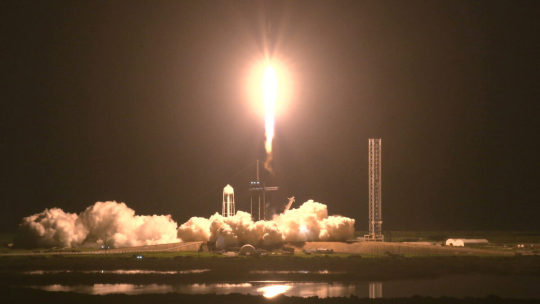
A SpaceX Falcon 9 rocket soars upward after liftoff at the pad at 3:27 a.m. EDT on Saturday, Aug. 26, from Kennedy Space Center’s Launch Complex 39A in Florida carrying NASA’s SpaceX Crew-7 crew members to the International Space Station. Aboard SpaceX’s Dragon spacecraft are NASA astronaut Jasmin Moghbeli, ESA (European Space Agency) astronaut Andreas Mogensen, JAXA (Japan Aerospace Exploration Agency) astronaut Satoshi Furukawa, and Roscosmos cosmonaut Konstantin Borisov.
9. The Near Space Network supported 19 launches in 2023! Launches included Commercial Crew flights to the International Space Station, science mission launches like XRISM and the SuperBIT balloon, and many more. Once in orbit, these satellites use Near Space Network antennas and relays to send their critical data to Earth. In 2023, the Near Space Network provided over 10 million minutes of communications support to missions in space.
Here’s to another year connecting Earth and space.
Make sure to follow us on Tumblr for your regular dose of space!
1K notes
·
View notes
Text







The first major solo museum presentation of fourth-generation Navajo weaver Melissa Cody (b. 1983, No Water Mesa, Arizona) spans the last decade of her practice, showcasing over 30 weavings and a major new work produced for the exhibition. Using long-established weaving techniques and incorporating new digital technologies, Cody assembles and reimagines popular patterns into sophisticated geometric overlays, incorporating atypical dyes and fibers. Her tapestries carry forward the methods of Navajo Germantown weaving, which developed out of the wool and blankets that were made in Germantown, Pennsylvania and supplied by the US government to the Navajo people during the forced expulsion from their territories in the mid-1800s. During this period, the rationed blankets were taken apart and the yarn was used to make new textiles, a practice of reclamation which became the source of the movement. While acknowledging this history and working on a traditional Navajo loom, Cody’s masterful works exercise experimental palettes and patterns that animate through reinvention, reframing traditions as cycles of evolution. Melissa Cody is a Navajo/Diné textile artist and enrolled member of the Navajo/Diné nation. Cody grew up on a Navajo Reservation in Leupp, Arizona and received a Bachelor’s degree in Studio Arts and Museum Studies from Institute of American Indian Arts, Santa Fe. Her work has been featured in The Barnes Foundation, Philadelphia (2022); Crystal Bridges Museum of American Art, Bentonville, AR (2021); National Gallery of Canada, Ottawa (2019–2020); Museum of Northern Arizona, Flagstaff (2019); SITE Santa Fe (2018–19); Ingham Chapman Gallery, University of New Mexico, Albuquerque (2018); Navajo Nation Museum, Window Rock (2018); and the Museum of Contemporary Native Arts, Institute of American Indian Arts, Santa Fe (2017–18). Cody’s works are in the collections of the Stark Museum of Art, Orange, Texas; the Minneapolis Institute of Arts; and The Autry National Center, Los Angeles. In 2020, she earned the Brandford/Elliott Award for Excellence in Fiber Art.
Melissa Cody: Webbed Skies currently on exhibition at MoMA PS1 through September 9nth, 2024
IDs Under the cut
Top to Bottom, Left to Right: White Out. 2012. 3-ply aniline dyed wool. 17 × 24″ (43.2 × 61 cm)
Deep Brain Stimulation. 2011. Wool warp, weft, selvedge cords, and aniline dyes. 40 x 30 3/4 in. (101.6 x 78.1 cm)
World Traveler. 2014. Wool warp, weft, selvedge cords, and aniline dyes. 90 x 48 7/8 in. (228.6 x 124.1 cm)
Into the Depths, She Rappels. 2023. Wool warp, weft, selvedge cords, and aniline dyes. 87 x 51 9/16 in. (221 x 131 cm)
Lightning Storm. 2012. 3-ply aniline dyed wool. 14 × 20″ (35.6 × 50.8 cm)
Pocketful of Rainbows. 2019. Wool warp, weft, selvedge cords, and aniline dyes. 19 x 10 3/4 in. (48.3 x 27.3 cm)
Path of the Snake. 2013. 3-ply aniline dyed wool. 36 × 24″ (91.4 × 61 cm)
351 notes
·
View notes
Text

1965 Jeep Wagoneer
Arriving in 1962 to replace the Willys Jeep Station Wagon, the Jeep Wagoneer marked a significant development in American automotive design. This vehicle combined off-road capability with passenger comfort, helping create what would become known as the Sport Utility Vehicle category. Available with two or four-wheel drive, the Wagoneer featured independent front suspension and offered an automatic transmission—unprecedented in comparable vehicles. The 230-cubic-inch "Tornado" overhead-cam straight-six engine provided reliable power.
Its practical design remained fundamentally unchanged for nearly three decades, with production ending in 1991. After a three-decade absence, Jeep revived the iconic nameplate in 2022 with the fourth-generation Wagoneer, now positioned as a full-size premium SUV based on the Ram 1500 chassis. The modern interpretation comes in standard and extended "L" versions, featuring advanced technology and powerful twin-turbocharged engines while maintaining the original's blend of luxury and capability.
96 notes
·
View notes
Text
2600’s amazing Hackers on Planet Earth con may go down under enshittification
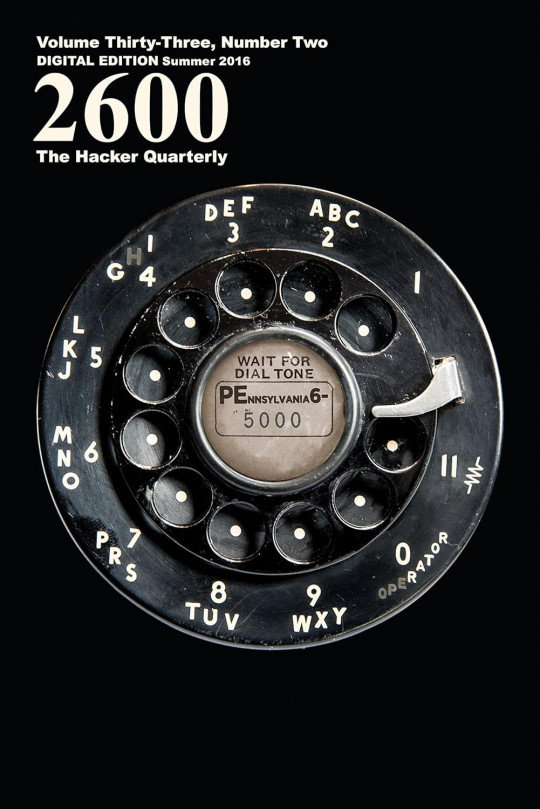
Catch me in Miami! I'll be at Books and Books in Coral Gables on Jan 22 at 8PM.

It's been 40 years since Emmanuel Goldstein launched the seminal, essential, world-changing 2600: The Hacker Quarterly. 2600 wasn't the first phreak/hacker zine, but it was the most important, spawning a global subculture dedicated to the noble pursuit of technological self-determination:
https://www.2600.com/
2600 has published hundreds of issues in which digital spelunkers report eagerly on the things they've discovered by peering intently at the things no one was supposed to even glance at (I'm proud to be one of those writers!). They've fought legal battles, including one that almost went to the Supreme Court:
https://en.wikipedia.org/wiki/DeCSS
They created a global network of meetups where some of technology's most durable friendships and important collaborations were born. These continue to this day:
https://www.2600.com/meetings
And they've hosted a weekly radio show on NYC's WBAI, Off the Hook:
https://wbai.org/program.php?program=76
When WBAI management lost their minds and locked the station's most beloved hosts out of the studio, Off the Hook (naturally) led the rebellion, taking back the station for its audience, rescuing it from a managerial coup:
https://twitter.com/2600/status/1181423565389942786
But best of all, 2600 gave us HOPE – both in the metaphorical sense of "hope for a better technological tomorrow" and in the literal sense, with its biannual Hackers On Planet Earth con:
https://en.wikipedia.org/wiki/Hackers_on_Planet_Earth
For decades HOPE had an incredible venue, the Hotel Pennsylvania (memorialized in the phreak anthem "PEnnsylvania 6-5000"), a crumbling pile in midtown Manhattan that was biannually transformed into a rollicking, multi-day festival of forbidden technology, improbable feats, and incredible presentations. I was privileged to keynote HOPE in 2016:
https://www.youtube.com/watch?v=f1D7APjmVbk
But after the 2018 HOPE, the Hotel Pennsylvania was demolished to make way for the Penn15 (no, really) skyscraper, a vaporware mega-tower planned as a holding pen for luxury shopping and empty million-dollar condos sold to offshore war-criminals as safe-deposit boxes in the sky. The developer, Vornado (no, really) hasn't actually done all that – after demo'ing the Hotel Pennsylvania, they noped out, leave a large, unusable scar across midtown.
But HOPE wasn't lost. In 2022, the ever-resilient 2600 crew relocated to Queens, hosted by St John's University – a venue that was less glamorous that the Hotel Pennsylvania, but the event was still fantastic. Attendance fell from 2,000 to 1,000, but that was something they could work with, and reviews from attendees were stellar.
Good thing, too. 2600 is, first and foremost, a magazine publisher, and these have been hard years for magazines. First there was the mass die-off of indie bookstores and newsracks (I used to sell 2600 when I was a bookseller, and in the years after, I always took the presence of 2600 on a store's newsrack as an unimpeachable mark of quality).
Thankfully for 2600, their audience is (unsurprisingly) a tech-savvy one, so they were able to substitute digital subscriptions for physical ones:
https://www.2600.com/Magazine/DigitalEditions
Of course, many of those subscriptions came through Amazon's Kindle, because nerds were early Amazon adopters, and because the Kindle magazine publishing platform offered DRM-free distribution to subscribers along with a fair payout to publishers.
But then Amazon enshittified its magazine system. Having locked publishers to its platform, it rugged them and killed the monthly subscription fees that allowed publishers to plan for a steady output. Publishers were given a choice: leave Amazon (and all the readers locked inside its walled garden) or put your magazine into the Kindle Unlimited system:
https://www.amazon.com/kindle-dbs/arp/B0BWPTCP4K?deviceType=A1FG5NAKX0MRJL
Kindle Unlimited is an all-you-can-eat program for Kindle, which pays publishers and writers based on a system that is both opaque and easily gamed, with the lion's share of the money going to "publishers" who focus on figuring out how to cheat the algorithm. Revenues for 2600 – and all the other magazines that Amazon had sucked in and sucked dry – fell off a cliff.
Which brings me to the present moment. After 40 years, 2600 is still at it, having survived the bookstorepocalypse, the lunacy of public radio management, the literal demolition of their physical home by an evil real-estate developer, and Amazon's crooked accounting.
This is 2600, circa 2024, and 2024 a HOPE year:
https://www.hope.net/
Once again, HOPE has been scheduled for its new digs in Queens, July 12-14. Last week, HOPE sent out an email blast to their subscribers telling them the news. They expected to sell 500 tickets in the first 24 hours. They didn't even come close:
https://www.2600.com/content/hope-ticket-sales-update
It turns out that Google and the other major mail providers don't like emails with the word "hacker" in them. The cartel that decides which email gets delivered, and which messages go to spam, or get blocked altogether, mass-blocked the HOPE 2024 announcement. Email may be the last federated, open platform we have, but mass concentration has created a system where it's nearly impossible to get your email delivered unless you're willing to play by Gmail's rules:
https://pluralistic.net/2021/10/10/dead-letters/
For Emmanuel Goldstein, founder of 2600 and tireless toiler for this community, the deafening silence following from that initial email volley was terrifying: "like some kind of a "Twilight Zone" episode where everyone has disappeared."
The enshittification that keeps 2600's emails from being delivered to the people who asked to receive them is even worse on social media. Social media companies routinely defraud their users by letting them subscribe to feeds, then turning around to the people and organizations that run those feeds and saying, "You've got x thousand subscribers on this platform, but we won't put your posts in their feeds unless you pay us to 'boost' your content":
https://www.eff.org/deeplinks/2023/04/platforms-decay-lets-put-users-first
Enshittification has been coming at 2600 for decades. Like other forms of oddball media dedicated to challenging corporate power and government oppression, 2600 has always been a ten-years-ahead preview of the way the noose was gonna tighten on all of us. And now, they're on the ropes. HOPE can't sell tickets unless people know about HOPE, and neither email providers nor social media platforms have any interest in making that happen.
A handful of giant corporations now get to decide what we read, who we hear from, and whether and how we can get together in person to make friends, forge community, rabble-rouse and change the world. The idea that "it's not censorship unless the government does it" has always been wrong (not all censorship violates the First Amendment, and censorship can be real without being unconstitutional):
https://pluralistic.net/2022/12/04/yes-its-censorship/
What can you do about it? Well, for one thing, you can sign up for HOPE. It's gonna be great. They've got sub-$100 hotel rooms! In New York City!
https://store.2600.com/products/tickets-to-hope-xv
If you can't make it to HOPE, you can sign up for a virtual membership:
https://store.2600.com/products/tickets-to-hope-xv-virtual-attendee
You can submit a talk to HOPE:
https://www.hope.net/cfp.html
You can subscribe to 2600, in print or electronically (I signed up for the lifetime print subscription and it was a bargain – I devour every issue the day it arrives):
https://store.2600.com/collections/subscriptions-renewals
2600 is living a decade in the future of every other community you care about, weird hobby you enjoy, con you live for, and publication you read from cover to cover. If we can all pull together to save it, it'll be a beacon of hope (and HOPE).
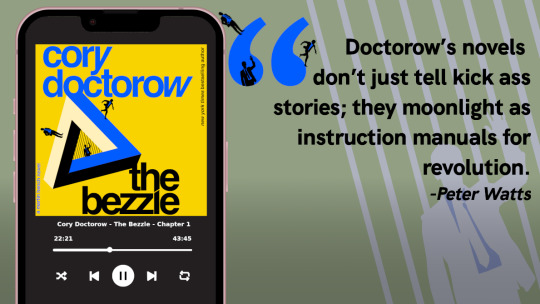
I'm Kickstarting the audiobook for The Bezzle, the sequel to Red Team Blues, narrated by @wilwheaton! You can pre-order the audiobook and ebook, DRM free, as well as the hardcover, signed or unsigned. There's also bundles with Red Team Blues in ebook, audio or paperback.

If you'd like an essay-formatted version of this post to read or share, here's a link to it on pluralistic.net, my surveillance-free, ad-free, tracker-free blog:
https://pluralistic.net/2024/01/19/hope-less/#hack-the-planet
#pluralistic#2600#hackers#magazines#publishing#kindle unlimited publishing#kindle#enshittification#monopoly#end to end#competition#events#nyc#hope#hackers on planet earth#amazon
426 notes
·
View notes
Text
"The first satellite in a constellation designed specifically to locate wildfires early and precisely anywhere on the planet has now reached Earth's orbit, and it could forever change how we tackle unplanned infernos.
The FireSat constellation, which will consist of more than 50 satellites when it goes live, is the first of its kind that's purpose-built to detect and track fires. It's an initiative launched by nonprofit Earth Fire Alliance, which includes Google and Silicon Valley-based space services startup Muon Space as partners, among others.
According to Google, current satellite systems rely on low-resolution imagery and cover a particular area only once every 12 hours to spot significantly large wildfires spanning a couple of acres. FireSat, on the other hand, will be able to detect wildfires as small as 270 sq ft (25 sq m) – the size of a classroom – and deliver high-resolution visual updates every 20 minutes.
The FireSat project has only been in the works for less than a year and a half. The satellites are fitted with custom six-band multispectral infrared cameras, designed to capture imagery suitable for machine learning algorithms to accurately identify wildfires – differentiating them from misleading objects like smokestacks.
These algorithms look at an image from a particular location, and compare it with the last 1,000 times it was captured by the satellite's camera to determine if what it's seeing is indeed a wildfire. AI technology in the FireSat system also helps predict how a fire might spread; that can help firefighters make better decisions about how to control the flames safely and effectively.
This could go a long way towards preventing the immense destruction of forest habitats and urban areas, and the displacement of residents caused by wildfires each year. For reference, the deadly wildfires that raged across Los Angeles in January were estimated to have cuased more than $250 billion in damages.
Muon is currently developing three more satellites, which are set to launch next year. The entire constellation should be in orbit by 2030.
The FireSat effort isn't the only project to watch for wildfires from orbit. OroraTech launched its first wildfire-detection satellite – FOREST-1 – in 2022, followed by one more in 2023 and another earlier this year. The company tells us that another eight are due to go up toward the end of March."
-via March 18, 2025
#wildfire#wildfires#la wildfires#los angeles#ai#artificial intelligence#machine learning#satellite#natural disasters#good news#hope
722 notes
·
View notes
Text
The Best News of Last Year - 2024 Edition
Welcome to our special edition newsletter recapping the best news from the past year. I've picked one highlight from each month to give you a snapshot of 2024. No frills, just straightforward news that mattered. Let's relive the good stuff that made our year shine.
1. January - South Korea passes law banning dog meat trade

The slaughter and sale of dogs for their meat is to become illegal in South Korea after MPs backed a new law. The legislation, set to come into force by 2027, aims to end the centuries-old practice of humans eating dog meat.
2. February - Greece legalises same-sex marriage

Greece has become the first Christian Orthodox-majority country to legalise same-sex marriage. Same-sex couples will now also be legally allowed to adopt children after Thursday's 176-76 vote in parliament. Prime Minister Kyriakos Mitsotakis said the new law would "boldly abolish a serious inequality".
3. March - Global child deaths reach historic low in 2022 – UN report

The number of children who died before their fifth birthday has reached a historic low, dropping to 4.9 million in 2022. The report reveals that more children are surviving today than ever before, with the global under-5 mortality rate declining by 51 per cent since 2000.
4. April - Restoring sight is possible now with optogenetics
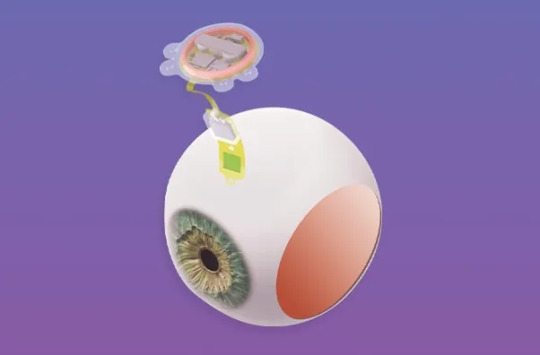
Max Hodak's startup, Science, is developing gene therapy solutions to restore vision for individuals with macular degeneration and similar conditions. The Science Eye utilizes optogenetics, injecting opsins into the eye to enhance light sensitivity in retinal cells. Clinical trials and advancements in optogenetics are showing promising results, with the potential to significantly improve vision for those affected by retinal diseases.
5. May - Vaccine breakthrough means no more chasing strains
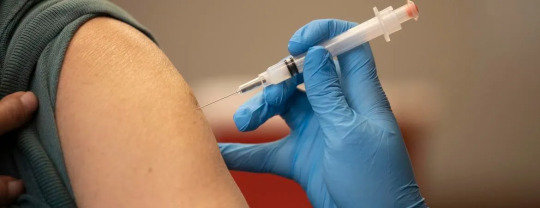
Scientists at UC Riverside have demonstrated a new, RNA-based vaccine strategy that is effective against any strain of a virus and can be used safely even by babies or the immunocompromised.
6. June - Bill Gates-backed startup creates Lego-like brick that can store air pollution for centuries

The Washington Post detailed a "deceptively simple" procedure by Graphyte to store a ton of CO2 for around $100 a ton, a number long considered a milestone for affordably removing carbon dioxide from the air. Direct air capture technologies used in the United States and Iceland cost $600 to $1,200 per ton, per the Post.
7. July - Stem cell therapy cures man with type 2 diabetes

A 59-year-old man had been suffering from diabetes for 25 years, needing more and more insulin every day to avoid slipping into a diabetic coma and was at risk of death. But then Chinese researchers cured his disease for the first time in the world. The patient received a cell transplant in 2021 and has not taken any medication since 2022.
8. August - Chinese drones will fly trash out of Everest slopes
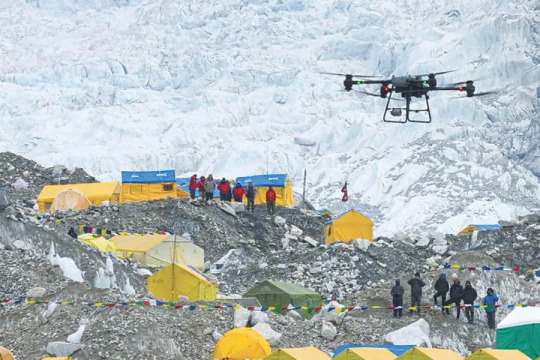
Come autumn, Nepal will deploy heavy lifter drones to transport garbage from the 6,812-metre tall Ama Dablam, south of Everest. This will be the first commercial work an unmanned aerial vehicle does in Nepal’s high-altitude zone.
9. November - Tokyo to make day care free to boost birth rate

Tokyo plans to make day care free for all preschool children starting in September, the city governor has announced as part of efforts to boost Japan's low birth rate.
10. October - FTC Rule Banning Fake Product Reviews Takes Effect With Stiff Penalties
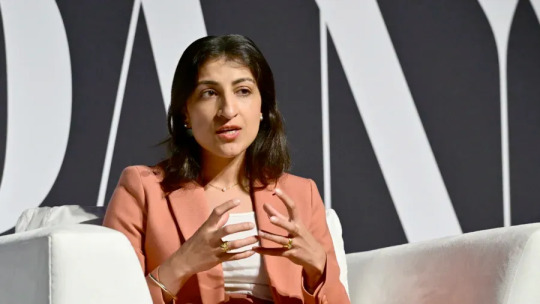
Federal Trade Commission (FTC) Chair Lina Khan announced on Oct. 21 that the agency’s prohibition on fake online reviews was taking effect, imposing fines as high as $50,000 for violations. Khan encouraged followers to report the proscribed practices at reportfraud.ftc.gov.
11. November - Bumblebee population increases 116 times over in 'remarkable' Scotland rewilding project

The bumblebee population has made an impressive comeback in a developed area by increasing to 116 times what it was two years ago thanks to a nature restoration group.
12. December - Spain to enshrine gay marriage and abortion rights into its constitution so 'they cannot be undone in the future'
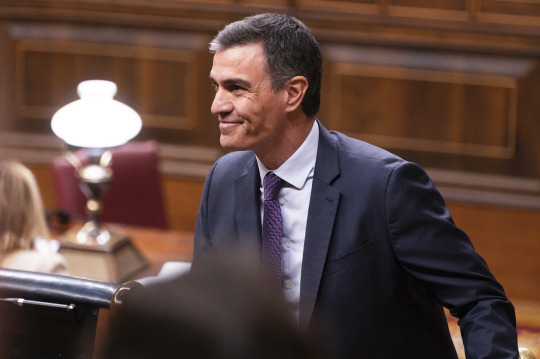
The left-wing PSOE leader made the announcement at an event marking the 46th anniversary of the Spanish Magna Carta.
“We believe that these are rights that we must protect in the Constitution so that no one can touch them in the future,” Sanchez said in a statement in parliament on Friday.
----------
That's it for last year :)
This newsletter will always be free. If you liked this post you can support me with a small kofi donation here:
Buy me a coffee ❤️
Also don’t forget to share this post with your friends.
465 notes
·
View notes
Text
Robert Tracinski for The UnPopulist:
The Covid-19 pandemic has produced a startling paradox. In response to the outbreak of a deadly disease, scientists developed an effective vaccine in record time. It is estimated to have saved three million lives in the U.S.—many more than the 1.2 million lives Covid claimed—and tens of millions of lives globally. Yet the immediate result is that resistance to vaccines increased. Those who oppose vaccines progressed rapidly from the fringe to the mainstream, and now, President Trump has appointed prominent vaccine skeptics to run the nation’s top health agencies: Robert F. Kennedy Jr. at Health and Human Services and Dave Weldon at the Centers for Disease Control and Prevention. How did we arrive at such a perverse result? Why are people turning against a lifesaving technology precisely at the moment when it has demonstrated its value?
A Pandemic Interrupted
The effectiveness of the vaccine is well supported by facts and evidence. For instance, a 2022 study in the New England Journal of Medicine (see a summary here) found that Covid vaccines were “52.2% effective at preventing infection and 66.8% effective at preventing hospitalization.” In other words, if you were vaccinated, you were half as likely to get the disease, and if you did get it, you were a third as likely to suffer a serious case. The effectiveness of the vaccine fades over time—but then again, so does the natural immunity conferred by getting full-blown Covid.
You can see the result in this chart of Covid death rates for the vaccinated versus the unvaccinated. The differential has narrowed in recent years as the pandemic recedes and far fewer people are getting Covid in the first place. But notice the giant spike in January of 2022, when the unvaccinated were dying at a rate 10 times as high as the vaccinated. That is how we know this was a successful vaccine, and that’s when a lot of lives were saved. A flurry of bad arguments has attempted to bury these facts in the public mind. Consider the complaint that the Covid vaccines are not “real” vaccines because they don’t provide “sterilizing immunity”—that is, they don’t completely prevent transmission of the disease. But this is based on ignorance about how “real” vaccines work. For example, Jonas Salk’s famous polio vaccine didn’t provide sterilizing immunity, either. Yet it kept the polio virus from attacking the nervous system, preventing paralysis and death.
But this issue is a red herring, because other vaccines such as the HPV vaccine do provide sterilizing immunity—and more than that, a 2020 study showed that the HPV vaccine’s adoption resulted in a 90% decrease in cervical cancer. Yet this vaccine was also targeted by a misinformation campaign. It briefly became an issue in the 2012 Republican primaries, when anti-vaccine talking points were promoted by Sarah Palin and others in the populist faction of the party that has since become dominant. Other objections, such as complaints about inconsistent or inaccurate early CDC recommendations about, for example, masking, are also red herrings—because the people who tout these arguments then tend to credulously accept the assertions of vaccine skeptics who have been wrong far, far more often than the experts. The success of the Covid vaccine can be seen in the degree to which we no longer worry about the disease. That in itself is not too remarkable. All pandemics eventually fade. What was really different this time is that the Covid vaccine cut the progress of the disease short. Before Covid, the fastest time for developing and deploying a vaccine was four years. At that pace, we would just have gotten our first Covid shots in 2024. But the new vaccines were deployed in less than a year, before the end of 2020.
[...]
Industrial Amnesia
This forgotten history suggests one of the main drivers of the current vaccine paradox. People turned against vaccines after Covid simply because the pandemic required them to think about vaccines, which they haven’t done for a long time. And because they haven’t done it for such a long time, they have forgotten—or never learned in the first place—why vaccines existed, what problem they solved. You may have heard the famous story about church bells ringing in 1953 when the successful test of the polio vaccine was announced. This is because most people had actually witnessed the horrible effects of the disease—it peaked in the U.S. in 1952—and many still remembered an era when children routinely died from infectious diseases.
This UnPopulist column nails it on why the rise of anti-vaxxer extremism has spread.
#Vaccines#Coronavirus Vaccines#Anti Vaxxer Extremism#Anti Vaxxers#Disinformation#Public Health#Natural Immunity#Dave Weldon#Robert F. Kennedy Jr.#Donald Trump#Trump Administration II
61 notes
·
View notes
Text
On Saturday, an Associated Press investigation revealed that OpenAI's Whisper transcription tool creates fabricated text in medical and business settings despite warnings against such use. The AP interviewed more than 12 software engineers, developers, and researchers who found the model regularly invents text that speakers never said, a phenomenon often called a “confabulation” or “hallucination” in the AI field.
Upon its release in 2022, OpenAI claimed that Whisper approached “human level robustness” in audio transcription accuracy. However, a University of Michigan researcher told the AP that Whisper created false text in 80 percent of public meeting transcripts examined. Another developer, unnamed in the AP report, claimed to have found invented content in almost all of his 26,000 test transcriptions.
The fabrications pose particular risks in health care settings. Despite OpenAI’s warnings against using Whisper for “high-risk domains,” over 30,000 medical workers now use Whisper-based tools to transcribe patient visits, according to the AP report. The Mankato Clinic in Minnesota and Children’s Hospital Los Angeles are among 40 health systems using a Whisper-powered AI copilot service from medical tech company Nabla that is fine-tuned on medical terminology.
Nabla acknowledges that Whisper can confabulate, but it also reportedly erases original audio recordings “for data safety reasons.” This could cause additional issues, since doctors cannot verify accuracy against the source material. And deaf patients may be highly impacted by mistaken transcripts since they would have no way to know if medical transcript audio is accurate or not.
The potential problems with Whisper extend beyond health care. Researchers from Cornell University and the University of Virginia studied thousands of audio samples and found Whisper adding nonexistent violent content and racial commentary to neutral speech. They found that 1 percent of samples included “entire hallucinated phrases or sentences which did not exist in any form in the underlying audio” and that 38 percent of those included “explicit harms such as perpetuating violence, making up inaccurate associations, or implying false authority.”
In one case from the study cited by AP, when a speaker described “two other girls and one lady,” Whisper added fictional text specifying that they “were Black.” In another, the audio said, “He, the boy, was going to, I’m not sure exactly, take the umbrella.” Whisper transcribed it to, “He took a big piece of a cross, a teeny, small piece … I’m sure he didn’t have a terror knife so he killed a number of people.”
An OpenAI spokesperson told the AP that the company appreciates the researchers’ findings and that it actively studies how to reduce fabrications and incorporates feedback in updates to the model.
Why Whisper Confabulates
The key to Whisper’s unsuitability in high-risk domains comes from its propensity to sometimes confabulate, or plausibly make up, inaccurate outputs. The AP report says, "Researchers aren’t certain why Whisper and similar tools hallucinate," but that isn't true. We know exactly why Transformer-based AI models like Whisper behave this way.
Whisper is based on technology that is designed to predict the next most likely token (chunk of data) that should appear after a sequence of tokens provided by a user. In the case of ChatGPT, the input tokens come in the form of a text prompt. In the case of Whisper, the input is tokenized audio data.
The transcription output from Whisper is a prediction of what is most likely, not what is most accurate. Accuracy in Transformer-based outputs is typically proportional to the presence of relevant accurate data in the training dataset, but it is never guaranteed. If there is ever a case where there isn't enough contextual information in its neural network for Whisper to make an accurate prediction about how to transcribe a particular segment of audio, the model will fall back on what it “knows” about the relationships between sounds and words it has learned from its training data.
According to OpenAI in 2022, Whisper learned those statistical relationships from “680,000 hours of multilingual and multitask supervised data collected from the web.” But we now know a little more about the source. Given Whisper's well-known tendency to produce certain outputs like "thank you for watching," "like and subscribe," or "drop a comment in the section below" when provided silent or garbled inputs, it's likely that OpenAI trained Whisper on thousands of hours of captioned audio scraped from YouTube videos. (The researchers needed audio paired with existing captions to train the model.)
There's also a phenomenon called “overfitting” in AI models where information (in this case, text found in audio transcriptions) encountered more frequently in the training data is more likely to be reproduced in an output. In cases where Whisper encounters poor-quality audio in medical notes, the AI model will produce what its neural network predicts is the most likely output, even if it is incorrect. And the most likely output for any given YouTube video, since so many people say it, is “thanks for watching.”
In other cases, Whisper seems to draw on the context of the conversation to fill in what should come next, which can lead to problems because its training data could include racist commentary or inaccurate medical information. For example, if many examples of training data featured speakers saying the phrase “crimes by Black criminals,” when Whisper encounters a “crimes by [garbled audio] criminals” audio sample, it will be more likely to fill in the transcription with “Black."
In the original Whisper model card, OpenAI researchers wrote about this very phenomenon: "Because the models are trained in a weakly supervised manner using large-scale noisy data, the predictions may include texts that are not actually spoken in the audio input (i.e. hallucination). We hypothesize that this happens because, given their general knowledge of language, the models combine trying to predict the next word in audio with trying to transcribe the audio itself."
So in that sense, Whisper "knows" something about the content of what is being said and keeps track of the context of the conversation, which can lead to issues like the one where Whisper identified two women as being Black even though that information was not contained in the original audio. Theoretically, this erroneous scenario could be reduced by using a second AI model trained to pick out areas of confusing audio where the Whisper model is likely to confabulate and flag the transcript in that location, so a human could manually check those instances for accuracy later.
Clearly, OpenAI's advice not to use Whisper in high-risk domains, such as critical medical records, was a good one. But health care companies are constantly driven by a need to decrease costs by using seemingly "good enough" AI tools—as we've seen with Epic Systems using GPT-4 for medical records and UnitedHealth using a flawed AI model for insurance decisions. It's entirely possible that people are already suffering negative outcomes due to AI mistakes, and fixing them will likely involve some sort of regulation and certification of AI tools used in the medical field.
87 notes
·
View notes
Text
This is it. Generative AI, as a commercial tech phenomenon, has reached its apex. The hype is evaporating. The tech is too unreliable, too often. The vibes are terrible. The air is escaping from the bubble. To me, the question is more about whether the air will rush out all at once, sending the tech sector careening downward like a balloon that someone blew up, failed to tie off properly, and let go—or more slowly, shrinking down to size in gradual sputters, while emitting embarrassing fart sounds, like a balloon being deliberately pinched around the opening by a smirking teenager. But come on. The jig is up. The technology that was at this time last year being somberly touted as so powerful that it posed an existential threat to humanity is now worrying investors because it is apparently incapable of generating passable marketing emails reliably enough. We’ve had at least a year of companies shelling out for business-grade generative AI, and the results—painted as shinily as possible from a banking and investment sector that would love nothing more than a new technology that can automate office work and creative labor—are one big “meh.” As a Bloomberg story put it last week, “Big Tech Fails to Convince Wall Street That AI Is Paying Off.” From the piece: Amazon.com Inc., Microsoft Corp. and Alphabet Inc. had one job heading into this earnings season: show that the billions of dollars they’ve each sunk into the infrastructure propelling the artificial intelligence boom is translating into real sales. In the eyes of Wall Street, they disappointed. Shares in Google owner Alphabet have fallen 7.4% since it reported last week. Microsoft’s stock price has declined in the three days since the company’s own results. Shares of Amazon — the latest to drop its earnings on Thursday — plunged by the most since October 2022 on Friday. Silicon Valley hailed 2024 as the year that companies would begin to deploy generative AI, the type of technology that can create text, images and videos from simple prompts. This mass adoption is meant to finally bring about meaningful profits from the likes of Google’s Gemini and Microsoft’s Copilot. The fact that those returns have yet to meaningfully materialize is stoking broader concerns about how worthwhile AI will really prove to be. Meanwhile, Nvidia, the AI chipmaker that soared to an absurd $3 trillion valuation, is losing that value with every passing day—26% over the last month or so, and some analysts believe that’s just the beginning. These declines are the result of less-than-stellar early results from corporations who’ve embraced enterprise-tier generative AI, the distinct lack of killer commercial products 18 months into the AI boom, and scathing financial analyses from Goldman Sachs, Sequoia Capital, and Elliot Management, each of whom concluded that there was “too much spend, too little benefit” from generative AI, in the words of Goldman, and that it was “overhyped” and a “bubble” per Elliot. As CNN put it in its report on growing fears of an AI bubble, Some investors had even anticipated that this would be the quarter that tech giants would start to signal that they were backing off their AI infrastructure investments since “AI is not delivering the returns that they were expecting,” D.A. Davidson analyst Gil Luria told CNN. The opposite happened — Google, Microsoft and Meta all signaled that they plan to spend even more as they lay the groundwork for what they hope is an AI future. This can, perhaps, explain some of the investor revolt. The tech giants have responded to mounting concerns by doubling, even tripling down, and planning on spending tens of billions of dollars on researching, developing, and deploying generative AI for the foreseeable future. All this as high profile clients are canceling their contracts. As surveys show that overwhelming majorities of workers��say generative AI makes them less productive. As MIT economist and automation scholar Daron Acemoglu warns, “Don’t believe the AI hype.”
6 August 2024
#ai#artificial intelligence#generative ai#silicon valley#Enterprise AI#OpenAI#ChatGPT#like to charge reblog to cast
182 notes
·
View notes
Text
Research Notes for the Consort of Peace (Part 1)
The different dynasties/Periods of chinese history
Below the cut you will find the first part of my research notes for my Megop AU based on the ancient chinese tale of Wang Zhaojun [here]. Unfortunately it is rather difficult to get access to peer reviewed books about ancient China where I'm from. So for this part a huge chunk of my research unfortunately relies on different documentaries and Youtube videos. If i got anything wrong in my research please feel free to tell me.
Xia Dynasty: 2100 - 1600 BCE
Probably very likely or even most definitely mythical -> the archeological record shows no proof of them ever having existed.
Before them china was ruled by so called “legendary sage emperors”
A guy named Yu had been commissioned by them to find a way to manage to floodings of the Yellow river -> managed to do that and founded the xia dynasty (Madsen 0:34)
Shāng Dynasty: 1600-1050 BCE
Capital near Zhengzhou (Tsin 1)
Bronze artifacts (Madsen 0:58)
Warlike in nature → Similar to the Mycenaeans in ancient Greece.
Technology regarding Bronze smithing improved throughout this dynasty
Probably invented writing/earliest form of chinese writing attributed to them (Madsen 1:10)
Jiǎ gǔ wén -> Oracle Bone inscription (Madsen 1:20) -> Writings on bones and turtle shells for divination
Women had a lot more rights during this time and were politically and militarily engaged → Example Fu Hao (Zhao 2022, 3:20)
Ended in a period of decadence and replaced by the Zhou (Madsen1:35)
Cool fact: Shang King Wu Di (Husband of Fu Hao) would travel around his kingdom disguised as a commoner to understand the troubles of the common people better (Zhao 2022, 5:00)
Zhōu Dynasty: 1050 - 256 BCE
Divided into 2 periods: Western Zhōu (1050-771 BCE) and Eastern Zhōu (771-256)
Eastern Zhōu happens at the same time as the Spring and Autumn Period (770-475 BCE) and the Warring states Period (475-221 BCE)
Capital Western Zhou: Hao (near Xi’an)
Capital Eastern Zhōu: Luoyang (in the province of Henan)
Confusius creates the idea of confucianism around this time (the -> Huge influence on chinese culture (Tsin 1)
Main rule of Confucianism: “do not do unto others what you would not want others to do unto you” but “felial Piety”/devotion to the family is equally if not even more important
Idea of Mandate of Heaven is created (Madsen) → Joshua Mark however claims the Mandate of heaven was created under the Shang Dynasty, the Zhou just developed it further (Mark, Han 3)
Mandate of Heaven: A king could only rule if he acted just -> He had the heaven’s favour and was granted the right to rule by the heavens. But the heavens could take that right away from him if he acted unjustly.(Madsen 1:51) → The ruler HAD to look after his people in order to keep the mandate of heaven.
Kinda like the “Gracie dei” in western medieval kingdoms except your god given right as a king came with conditions
There will be signs by the heavens before hand -> natural disasters (Madsen 1:55)
Book of Songs was written around this time (taken from personal university class notes)
Functioned under a complex feudalistic system → Decentralised government (Epimetheus 1:50)
The Zhōu decline was long and painful starting with the Spring and Autumn period
In the end China broke into many different kingdoms and states (Zhōu being but one of them)
Warring States Period: 475-221 BCE
The Zhou were, according to Cartwright: “No longer dominant in military terms, the Zhou were forced to rely on armies of other allied states, who on occasion took the opportunity to forward their own territorial claims. For this reason, the Zhou king was compelled to sometimes make the military leader of another state the military leader of the Zhou alliance.” (2) → The greatest of these military leaders received the title of Hegemon.
By the 4th century BCE 100 smaller states had been “consolidated by conquest” (Cartwright 2) into 7 major states: Chu, Han, Qi, Qin, Wei, Yan and Zhao.
“In each state, the ruler declared himself king and independent of the Zhou empire.” (Cartwright 2)
Basically everyone was fighting everyone at all times.
It also marked the beginning of China’s use of a cavalry in the military as well as the chineses’ entry into the iron age through the use of iron swords and crossbows (Cartwright 3)
There were still cultural developments despite the constant wars (Cartwright 5)
Metalworking developed (Iron)
agricultural revolution (Iron tools)
cities grew in size
large defensive walls
towers were erected
Multi-storey citygates to impress visitors
Rulers’ Palaces became more extravagant
Marketplaces → Trade
Industrialised pottery and weapon production
Town planning (Grid pattern similar to Roman and Greek Colonies in the West)
Introduction of bronze coins with a hole in the middle
Philosophy → Writings and contemplation on Confucius, Daoism, Legalism, War Tactics (Sun Tzu)
Qin Dynasty: 221-206 BCE
Before the rise of the Qin Dynasty, the Qin had remained “one of the few states which remained loyal to the Zhou” (Cartwright 4)
Several Qin rulers had received the title of Hegemon from the Zhou kings during this time (Cartwright 4).
Qin conquered all the other nations at the end of the warring states period.
Reunited China into one nation
Rulers of previous dynasties were called kings (Wáng 王)
the Qin ruler (Qin Shi Huang) invented a new title for himself -> Emperor (Huáng Dì 皇帝)(Madsen)
Qin Shi Huang was known for his brutality and draconian rule
Qin Shi Huang “understood that the Zhous's policy of a decentralized government had contributed to its fall and so established a centralized state which decreased the power of the aristocracy, eliminated the borders between different states, and operated according to the precepts of the philosophy of Legalism”. (Mark, Qin 2)
He forced a unified writing systems onto those he conquered and had hundreds of historians executed and historical records burned ->he wanted to unite the people of China under one shared identity and for the “history of China to start with him”.
But his bookburnings had other reasons → Scholars would write tracts criticising Qin Shi Huang’s rule and comparing it with more benevolent rulers of the past Zhou dynasty and saying Qin Shi Huang was ignoring the mandate of heaven by not caring for his subjects correctly (turning them into slaves) (Mark, Qin 5)
People who tried to hide the history books and writings of past dynasties were also executed (Mark, Qin 5)
But not only history books were burned also “any works expressing the concepts from the period of the Hundred Schools of Thought should also be destroyed including the standard educational texts known as the Four Books and Five Classics from the Zhou Dynasty. Anyone speaking on such topics should be killed and any officers or officials who heard of such conversations and did not report them should be likewise.” (Mark, Qin 5)
Only medicine and science books were spared. (Mark, Qin 5)
→ Had scholars executed by burying them alive in a mass grave (Madsen 3:40)
“Shi Huangdi suppressed all freedom of speech, had the legal codes rewritten to adhere more closely with his own personal vision.” (Mark, Qin 6)
“A one hit wonder of a dynasty” (Montgomery)
Joshua Mark: “213 BCE, his need to control every aspect of his subjects' lives, and fear of rebellion, had turned China into a police state in which freedoms were severely limited and the peasant class was reduced to a level of conscript slavery” (2)
Under Qin Shi Huang China saw the first version of the Great Wall (protection against the invading Xiongnu), the Grand Canal, introduction of state coinage, highway constructions, and the terracotta army in his tomb. (Mark, Qin 2)
Joshua Mark: “His early reign seems, at first glance, a model for any monarch in true leadership and care for his people but Shi Huangdi only interpreted the Mandate of Heaven in terms of his own power and self-importance; his subjects were a means to an end, not an end in themselves. Those who worked on the wall, the canal, and other public projects, if they even were initially paid, quickly became conscripts taken from their homes to labor for scraps of food and communal lodgings.” (Qin 4)
“He encouraged science and discouraged letters” (Mark, Qin 4)
Joshua Mark: “The people's lives under the Qin became harsh, narrow, and more uncertain (..) because government officials could take anyone they wanted to work on the emperor's projects, no matter their social class or occupation. Only the emperor's men were allowed weapons so there was no armed resistance possible and, even if arms had been available, Shi Huangdi's network of spies, secret police, and informants would have revealed a plot before it had a chance to be put into action”. (Qin 5)
Shi Huangdi became increasingly more paranoid as time went on leading to more and more restrictive laws → Scared of usurpation and assassination → Grew obsessed with the idea of immortality → Sent officials to find the elixir of immortality
Qin Shi Huang famously died after swallowing mercury, believing it’d turn him immortal.
Shi Huang’s chief advisor Li Siu changed the emperor’s will after his death → Shi Huang intended his “commanding eldest son Fusu” as his heir → Li Siu feared Fusu would replaced him as chief advisor and made the “spoiled, coddled, youngest son” Hu Hai as he was “easy to manipulate” (Mark, Qin 8)
“He (Hu Hai) was famous for his bad temper, ordering the death of anyone who brought him bad news, and his lasting legacy is the origin of the saying “Don't kill the messenger” regarding a negative reaction to receiving unwelcome information.” (Mark, Qin 9)
The Qin Dynasty officially fell under the rule of Qin Shi Huang’s grandson Ziying who was unable to stop the rebellion of Liu Bang of Han and Xiang Yu.
Liu Bang of Han had accepted the surrender of Ziying and treated him well.
Xiang Yu however had Ziying and his entire family executed.
Han Dynasty: 206 BCE - 220 AD
Existed around the same time as the ancient Roman Republic and Empire and the Diadochi all the way up to the reign of emperor/empress Elagabalus. → Even traded with the roman empire → See the Roman Silk ban of 14 AD.
This is the dynasty during which Wang Zhaojun lived during the reign of emperor Yuan
The majority of Chinese people are part of the Han ethnic group, which receives its name from the Han dynasty. (Mark, Han 2)
Divided into the earlier Western and later Eastern Han Period (named after the location of the capitals)
Western Han: 206 BCE - 9 AD
Xin Dynasty: 9 AD - 25 AD → Regent Wang Mang declared the Han Dynasty is over and created the VERY brief XinDynasty after which the Han resumed (Mark, Han 1)
Eastern Han: 25 AD - 220 AD
Joshua Mark: “(The Han Dynasty) established the paradigm for all succeeding dynasties up through 1912 CE.” (Han 1)
Founded by Liu Bang, a commoner (born a peasant, worked as a sheriff) → Later called Emperor Gaozu → Liu Bang straight up rolled Nat20 on every single Charisma and Deception Check and faked his way onto the throne.
Liu Bang and Xiang Yu, after defeating the Qin dynasty, turned on each other → Liu Bang finally gained the upper hand by kidnapping Xiang Yu's concubine, Lady Yu, who was the great love of his life, and luring the Chu forces into a hopeless situation at the Battle of Gaixia (202 BCE). Lady Yu committed suicide and Xiang Yu, after burying her, fought his way out but was pursued and killed himself rather than be taken. Liu Bang then established the Han Dynasty, ruling as the Emperor Gaozu (r. 202-195 BCE)” (Mark, Qin 9)
Liu Bang later executed and demoted his other generals upon the request of his wife empress Lu Zhi → known as one of China’s most cruel women (Montgomery).
Capital was moved from Luoyang to Chang’an (Mark, Han 3)
“With no experience in government, Gaozu had to rely on earlier models and so adopted the decentralized government of the Zhou and the Legalism of the Qin (though the latter was implemented more benevolently). The decentralized state was divided into 13 administrative districts known as commanderies (also as jun) and awarded ten kingdoms to members of his family whom he expected to rule justly” (Mark, Han 3)
According to Poulpart: “Liu Bang created a new governmental structure composed of three actors with overlapping functions, guaranteeing that one would not dominate the other. This system was relying on a chancellor (chengxiang), who was responsible of the cases that would be managed by the emperor, a supreme Commander (taiwei) responsible of any military action or decision, and an imperial counsellor (yushi dafu) at the helm of the bureaucracy and administrative system.” (1)
As a former peasant Liu Bang understood how commoners had felt under the Qin rulers → Lowered Taxes for commoners, redistributed wealth, made some of the rules less strict (Mark, Han 3)
Liu Bang opened up bureaucratic positions for people of all social classes (Mark, Han 3) → His successor emperor Wen of Han would later take this idea further and introduce the imperial state exam → An Exam people of all social classes could take in order to become imperial civil servant
During the Han period Confucianism was the state religion → According to Confucianism’s ideas the state system of the chinese emperors was superior to every other form of civilisation → Han Emperors used this as explanation for expansionist politics (especially under emperor Wu of Han) → It was their mission given to them by the Mandate of Heaven (Poulpart 1)
Confucianism grew in popularity even amongst commoners but they still practised their own local cults (Poulpart 2) → Confucianism was mostly popular and important within the higher social classes (Poulpart 2)
The Han Dynasty was a period of lots of scientific and artistic advancements, marked by Confucianism and the creation of the silk road under emperor Wu. (Mark, Han 2)
The Hans invented the water wheel, the compass, the seismograph, musical theory and paper (Mark, Han 2)
Creation of the silk road -> Trading routes would reach up to the Roman Empire
The Han also “encouraged literacy and the study of history” (Mark, Han 2) → Sima Qian, the chinese Herodotus, lived during the Han Period
Iron, copper and Salt were regulated by the government → Government held a monopoly on those markets (Poulpart 2) → The Han-Xiongnu wars were partly the reason for that monopoly
Chinese Mythology underwent development during this time → Think Nezha, the Queen mother of the West, Guanyin, Chang’e, the Jade Emperor etc. (Mark, Han 2) → Many of these figures have existed since the Shang Dynasty
Wars with the Xiongnu (A distinct ethnic group from the mongolian Steppe)
Xiongnu wars lasted for 200 years → Will talk about these in more detail in the Xiongnu section
After Liu Bang’s death his wife Lu Zhi was in charge through several puppet rulers (Mark, Han 3) → She was then executed and Emperor Wen of Han took over.
Wen’s son Emperor Jing saw that the decentralised government was not working well → centralised the Han empire (Mark, Han 4)
Reigns of Wen and Jing = Golden Age
After Jing came Emperor Wu → Expansionist policies, made everyone (nobles and commoners) equal under the law code, gave commoners better opportunity to become government officials, adopted Confucianism as the state philosophy (Mark, Han 4)
Expansion into Korea and Vietnam ( → the Trung Sisters Rebellion) and more wars against the Xiongnu (Successful) & establishment of the Silk road (Mark, Han 4)
After Wu → Emperor Zhao → Emperor Liu He → Emperor Xuan → Emperor Yuan (The one from Wang Zhaojun’s tale)
Emperor Yuan (Or Yuandi) → Big supporter of Confucianism → Because of this (filial piety) he gave powerful positions to his wife’s family members → This and “failure to check the power of his eunuch secretaries” lead to the fall of Western Han and rise of the Xin dynasty
Yuan’s son, Emperor Cheng continued his father’s mistake until his cousin Wang Mang seized power and declared himself Emperor in 9 AD. (Encyclopedia Britannica 1) →Xin Dynasty
Wang Mang was meant to act as a regent to Cheng until he came of age → did not give the power back to Cheng when he was an adult
Joshua Mark: “Wang was a Confucian scholar and idealist who believed that a single, strong ruler with a clear vision and the freedom to do as he pleased would be more effective than one who took counsel and had to discuss policy with others before implementing it.” (5) → Wang Mang was kinda useless as a ruler → “The people grew frustrated with his ineptitude and a mob overran the palace, hacked him to pieces, and used his head as a kickball” (Mark, Han 5)
Emperor Xuan → Reestablished the Han Dynasty → Weak and was soon deposed during the Red-Eyebrow-Rebellion (Mark, Han 6)
Emperor Guangwu → Moves capital to Luoyang → Begin of the eastern Han period → created reforms to avert another Xin situation (Mark, Han 6).
“the Han ruling house fairly quickly devolved into a series of monarchs who cared more about indulging their pleasures than ruling a country” (Mark, Han 6) → The emperors left country affairs to their Eunuchs.
By 130 AD the imperial court had become corrupt by Eunuchs who held all the power (Mark, Han 2)
At the same time the Han were spending money on expansionist policies into Korea, Vietnam and on wars against Xianbi (A Nomadic group from the mongol steppe like the Xiongnu and Huns)
Famines, Floods and taxes
The Han Dynasty ended after General Cao Cao defeated the yellow turban rebellion, tried taking over control of the empire. After his defeat via his fellow military commanders, the kingdom was split into three different realms. (Mark, Han 2)
Three Kingdoms: 220-264
After the Fall of the Han Dynasty
Romance of the three kingdoms takes place around this time
Basically summarised as “Warring States Period 2: Electric Boogaloo”
Jin Dynasty: 265 - 420
Very shortly lived Dynasty
Descendants of the generals who usurped the imperial throne
It was of the three kingdoms of the previous era, the Wei Kingdom which prevailed and re-unified China (Madsen 5:00)
United China but their reign was marked by wars and violence (Epimetheus 3:30)
Palace intrigue → Civil war 299 - 301 AD
Jin Dynasty fell at the hands of Xiongnu tribes who “settled in the north of china and proved hard to govern” (Madsen: 5:20)
Xiongnu attacked both of China’s capital cities Luoyang and Chang’an
“Many people fled to the south of Nan Jing where the Jin had set up a government in exile” (Madsen 5:30)
Period of the Northern and Southern Dynasties: 386-589
Northern Wei and the Southern Qi empires
Often considered a dark age of Chinese history (Epimetheus 3:40)
“Dominated by warlords who raided the lands and by barbarian invasions” (Epimetheus 3:48)
Buddhism increased in popularity (had been around in China since the Han Dynasty however) (Madsen: 5:40)
At the end the Wei and Qi kingdom had around 9000 buddhist temples combined (Madsen: 5:48) → Many rulers openly supported Buddhism
Sui Dynasty: 581 - 618
Had only 2 reigning emperors
Was able to unify China again
Instead of following the rules of Confucius, the Sui emperors tried to act upon Buddhist principles. (Madsen 6:30)
Their “structural changes which paved the way for a more long-lasting successor, the Tang Dynasty” (Cartwright, Sui 1)
Reinstalled the rule of ethnic han chinese (Epimetheus 3:53)
Integrated the barbarians that had invaded China during the previous period (Epimetheus (4:10)
After 1 million men were taken to Korea for military service → Rebellions arose in China during this time → Rebellion lead by Sui Emperor’s cousin Li Yuan overthrew the Sui → Renamed himself emperor Gaozu (Like Liu Bang of Han)
Tang Dynasty: 618 - 906
The second golden Age
Most C-Dramas i watch tend to take place around this period
Arts flourished around this time → Especially Poetry
Tea became more popular → Tea ceremonies (Madsen 8:10)
The story of Yan Gufei (another one of the 4 beauties of China) is set during this time
Internal stability
Scientific advancement
China’s population grew to 80million (Epimetheus 4:20)
The imperial exam of the han was picked up again and modified → Meritocracy (Madsen 7:30)
Surprisingly tolerant of foreigners for an ancient civilisation → Chang’an was cosmopolitan (Madsen 7:40)
All three religions of China (Daoism, Confucianism and Buddhism) thrived during the Tang
Towards the end they began persecuting Buddhists and were deposed after several rebellions (Epimetheus 4:50)
Five Dynasty Period: 907-960:
China broke again
There is once again war between everyone
Song Dynasty: 960 - 1279
Divided into Northern Song(960-1127) and Southern Song (1127-1279) (Tsin 1)
Scientific advancements and military development
Started out with a strong economy but was militarily a lot weaker than previous dynasties (Madsen 8:40)
Mass printing and gunpowder was invented during this period (Epimetheus 5:05)
First Paper currency
Southern Song started after Jurchens attacked the capital city and took the Emperor and several officials hostage → The north of china was lost to the Jurchens → New emperor crowned in the south where the Song remained until 1279 (Madsen 8:50)
Tea houses and night markets became popular around this time
Storytellers within these tea houses (Madsen 9:10)
Art in the form of poetry and landscape paintings flourished during southern Song (Madsen 9:20)
North of China during this time was ruled by the Jurchens who after a while took over the chinese imperial system, language, writing system and way of life (Madsen 10:00)
Yuan Dynasty: 1279 - 1368
Mongol Invasion → Genghis Khan’s grandson Kublai Khan
Moved the Capital city to Dadu (Today Beijing)
Taken from class notes: Around this time the novel became popular → The Mongol emperors did not care for poetry → They preferred theatre → Journey to the West style stage play → Was written down as a novel → entered the “mainstream”
The Yuan controlled the entire silkroad from China to Europe (Epimetheus 5:30)
Diversity in culture (Epimetheus 5:40)
But Marco polo did note that there was “ethnic tension” in China → Different ethnic groups were placed in different taxation groups (Madsen 13:30)
“A chinese could land with a hefty fine if he fought a mongol, but a mongol could get away scot free if he killed a chinese” (Madsen: 13:40)
The Mongols kept chinese advisors however and adopted the idea of the chinese emperor being “the son of heaven” (Madsen 14:00)
More Europeans visited China around this time (Like Marco Polo)
Just like the Mongol empire as a whole, this period was very short lived
Ming Dynasty: 1368 - 1644
Founded by a commoner (Taizu) after a successful rebellion against the Mongols
Taizu was a harsh ruler → Went after literati (kinda like emperor Qin but with a bit less executions)
The Imperial exam remained under his rule however → one had to study the 4 great Books → Confucius Analects, Mencius, Doctrine of the Mean and the Great Learning (Madsen 15:30)
Another golden age
Construction of the famous forbidden city in 1406-1420
Ming Vases were a popular exported good
Literature and Art flourished
The great Wall of China was expanded to keep the Mongols out
Problems with Pirates
Chinese age of exploration → Explorers went as far as east africa and returned with Giraffe’s to the emperor’s court (Madsen 16:00)
Foreign merchants were limited to outposts but could not really go deeper inside China (Madsen 16:40)
Some emperors had around 10’000 concubines around this dynasty (allegedly)
Famine lead the end of the Ming Dynasty
Qing Dynasty: 1644 - 1912
The Manchu ethnic group ruled China after crossing the great wall (Madsen 17:00)
All men in china were ordered to get the Manchu Hairstyle to show their loyalty to the new Dynasty (Madsen 17:10)
Period of stability followed
Most on the information i could find on the harem system came from this period
Not nearly as glamorous as depicted in C-Dramas (shocker)
“Started as a golden age, ended in disaster” (Epimetheus 5:50) → Opium wars
Fell after the Chinese revolution and the establishment of the Republic of China
The life story of the last Emperor of China is honestly a hot mess.
After the fall of the Qing Dynasty some Consorts and Concubines had to become prostitutes to survive
Sources:
Cartwright, Mark: Warring States Period, World History Encyclopedia, 2017 https://www.worldhistory.org/Warring_States_Period/
Cartwright, Mark: Sui Dynasty, World History Encyclopedia, 2017. https://www.worldhistory.org/Sui_Dynasty/
The Editors of Encyclopaedia Britannica. "Yuandi". Encyclopedia Britannica, 16 Apr. 2024, https://www.britannica.com/biography/Yuandi, Accessed 22 March 2025.
Epimetheus: All China’s Dynasties explained in 7 minutes, Youtube, 2018 https://youtu.be/fFNzX3tYTXU?si=eZd4uWgxxgJTlufI
TSIN, Micheal: China - Timeline of Historical Periods, Asia for Educators, Columbia University, 1995 https://afe.easia.columbia.edu/timelines/china_timeline.htm
MADSEN, Jared: All of China’s Dynasties in ONE Video - Chinese history 101, youtube, 5th August 2022https://youtu.be/Fz_uQNQBK0g?si=Dm4_3DoomfgN7jZo
Mark, Joshua: Han Dynasty, World History Encyclopedia, 2020. https://www.worldhistory.org/Han_Dynasty/
Mark, Joshua: Qin Dynasty, World History Encyclopedia, 2020. https://www.worldhistory.org/Qin_Dynasty/
MONTGOMERY, Lazlo: The Han Dynasty (Part 1), in: the chinese history podcast, Ep. 18 https://open.spotify.com/episode/1umFA07mSPCuPyCCcAKiK4?si=pe4iHig8QFOO6_-kv9XTzg
Poupart, Jean-Baptiste: Han Dynasty, Academia https://academia.edu/resource/work/40640987
Zhao, Xiran Jay: China’s forgotten Warrior Queen – Fu Hao, Youtube, 2022.
https://youtu.be/U0luii3sKjQ?si=MDSuCUOqVKn20TIN
#history#chinese history#ancient chinese history#ancient history#megop#the consort of peace#consort of peace#transformers#maccadam#transformers one#maccadams#dpax#transformers animated#tfa megop#shang dynasty#chinese dynasties#research notes#han dynasty#ancient china#ancient china au#megatron x optimus prime
36 notes
·
View notes